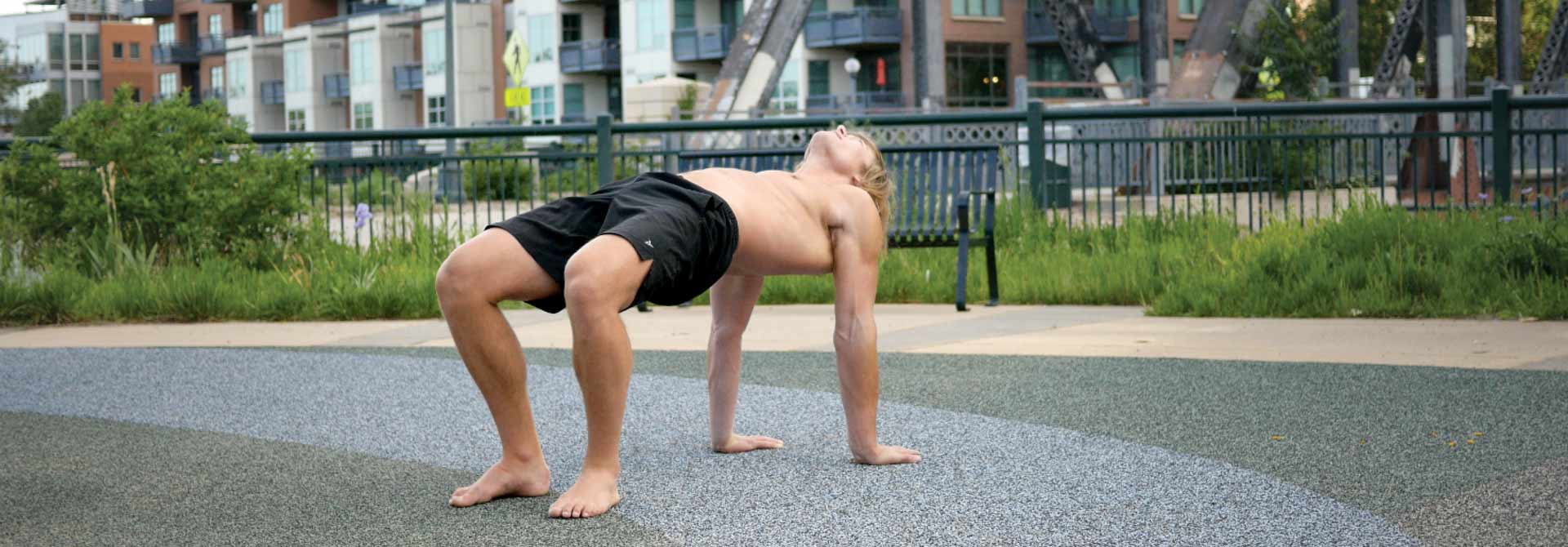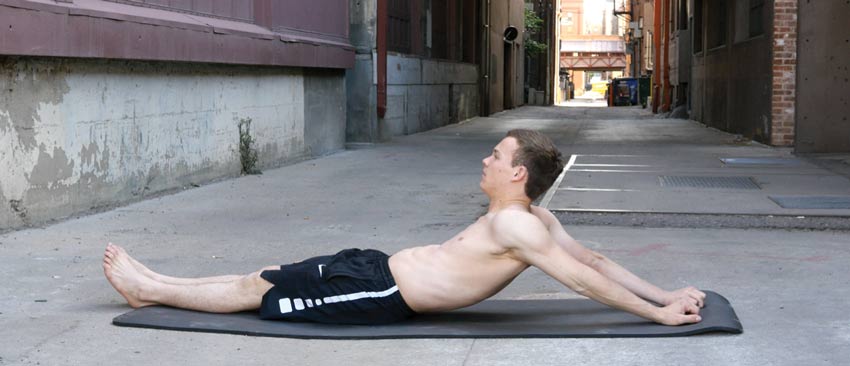Mobility for Desk Workers: Table Rocks

After Tim Ferriss interviewed Coach Christopher Sommer on his podcast, we received an overwhelming response that many people are stiff, tight, and aching from years spent working at a desk. This is no new phenomenon. We know it’s healthy and important to move throughout the day to break up long chunks of computer work. Even my mom strives to take the stairs in her office building and goes walking on her lunch break. Kudos if you’re doing that too!
However, desk work creates distinct tightness and weakness in the body that can’t be entirely addressed by your daily strolling. Specifically, desk warriors get particularly tight in their hips and shoulders from sitting, looking down at paperwork and computer screens, and typing away for hours at a time. Our bodies were made to move through a wide collection of positions throughout the day, and focusing intensely on our work means we often neglect countless postures our bodies need to stay mobile and comfortable.
Consider all the ways your body COULD move, theoretically, even if those positions seem out of reach to you at this time. Legs wide apart, arms out behind you, arms overhead, touch your toes, neck up and down and all around. All of these hypothetical movements are how your body SHOULD be able to maneuver if you give it a trying chance.
It’s okay if you’re not ready to take on all these positions right now, but consider these potential movements as a guide to work towards: regain ALL your natural ranges of motion. There are an indefinite number of ways to keep yourself mobile and at ease in your body, even as a desk jockey. We covered other key stretches to counter the effects of sitting before, and today we will detail another mobility drill that helps desk workers regain comfortability: Table Rocks.
Some Tips About Shoulders and Hips:
Before we dive into how to perform Table Rocks, let’s discuss what is happening in your shoulders and hips when you sit with a rounded posture all day. Chronic sitting and inactivity tend to weaken your entire posterior chain (everything on your backside: glutes, hamstrings, back, etc.) and tighten your entire anterior chain (everything on the front side: hip flexors, quads, chest, etc.).
When your shoulders are rounded forward for long periods of time, like when your working at your computer during the midday slump, your body will ultimately adapt to that position by allowing certain muscles to get stiff and other muscles to go inactive. A similar process happens to your hips when seated: the back of the body shuts off, and the front of the body shortens.
An enormous problem arises when people go into the gym after working at a desk all day and try to go overhead, lift tons of weight, or move their body through positions where the muscles are exceptionally tight or weak.
Tight muscles involved in shoulder movements, like the lats, traps, pecs, and biceps, limit your range of motion when attempting to lift your arms above your head. This range of motion is crucial for Gymnastics Strength Training, but also for many other fitness pursuits: Olympic lifting, CrossFit, yoga, softball, etc. Therefore, it’s imperative to address this tightness before it becomes an injury.
Looking at the lower body, weak glutes and tight hip flexors mean lack of hip extension. Back to those natural ranges of motion, weakness here can spell injury for those of us who engage in running, walking, squatting, or jumping without first addressing this deficit.

It’s Not Right to be Tight
We can combat all of the aforementioned issues with just one movement! There are SO MANY ways to improve your mobility if you really resonate with the descriptions above. But Table Rocks are a simple exercise that can get you started with your journey to natural ranges of motion. Table Rocks stretch your shoulders and hips while simultaneously strengthening the back line of your body.
From a seated position, reach your arms back behind you with palms shoulder-width on the ground. Place your feet flat on the floor near your hips at about the same width as your hands, and from here be sure to sit up tall with your back straight. Begin the movement by retracting your shoulder blades (pinch them together) and squeezing your glutes, then press both your hands and feet into the ground to initiate the lift.
Strive to reach a top shape where your shoulders are extended to 90 degrees behind your torso, and your hips are open to a perfectly flat “table top” position. If that’s not you quite yet, just go as high as you can without too much discomfort and definitely without pain*. Pause briefly, then reverse the movement. Keep your elbows straight, shoulders retracted, and glutes tight. Repeat for 10 reps!
* A Note About Discomfort When Stretching: “Wowza! This is certainly a stretch, those GB people know what they’re talking about and I’m a bit uncomfortable!” is a normal reaction and will improve over time. “Ouch, I think I am presently tearing my bicep and may not be able to drive myself home after this! Those GB people are sadists!” Means you’ve gone WAY too far and need to back off immediately! Whenever we are stretching, we are always aiming for a 4/10 discomfort level. Enough that you’re working, but never feeling pain. This helps keep us at a range that is beneficial and encourages improvements without increasing our risk of injury.
Wrap-up
- Sitting at a desk all day means your backside gets weak while the front of your body gets tight.
- Working towards natural ranges of motion helps mitigate your injury risk and increases comfortability.
- Table Rocks help stretch your shoulders and hips while simultaneously strengthening your glutes and upper back.
Table Rocks are just one way to encourage natural body movements, increase comfort in your day-to-day life, and mitigate injury risks. Our Online Courses are chock full of other mobility drills, stretches, and strengthening exercises that can help you move even better. And, as always, we love to hear from you! Drop us a comment, or tag us in your post so we can see your progress with these Table Rocks!

